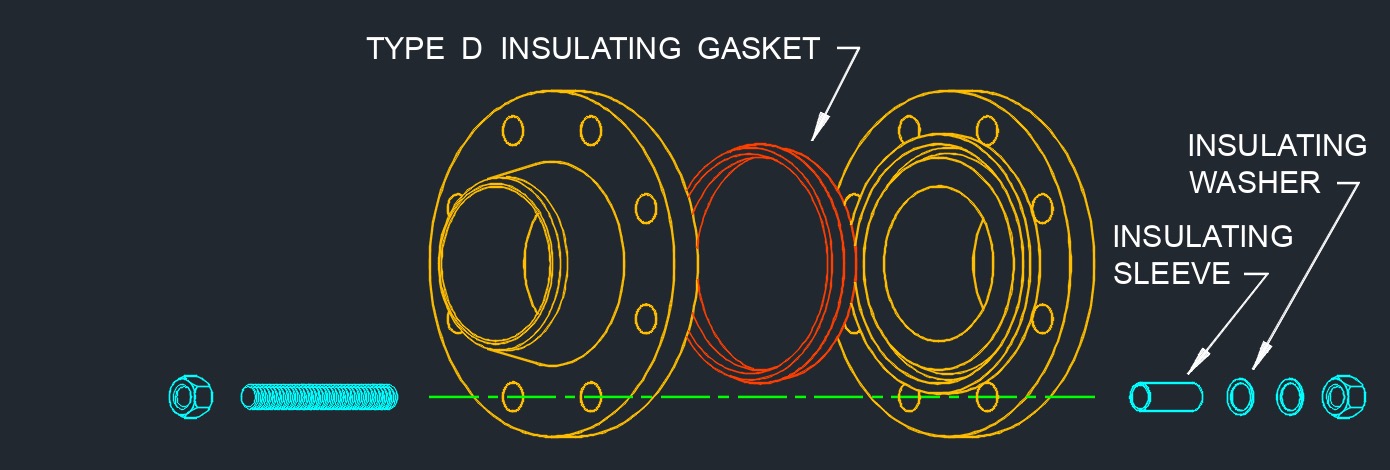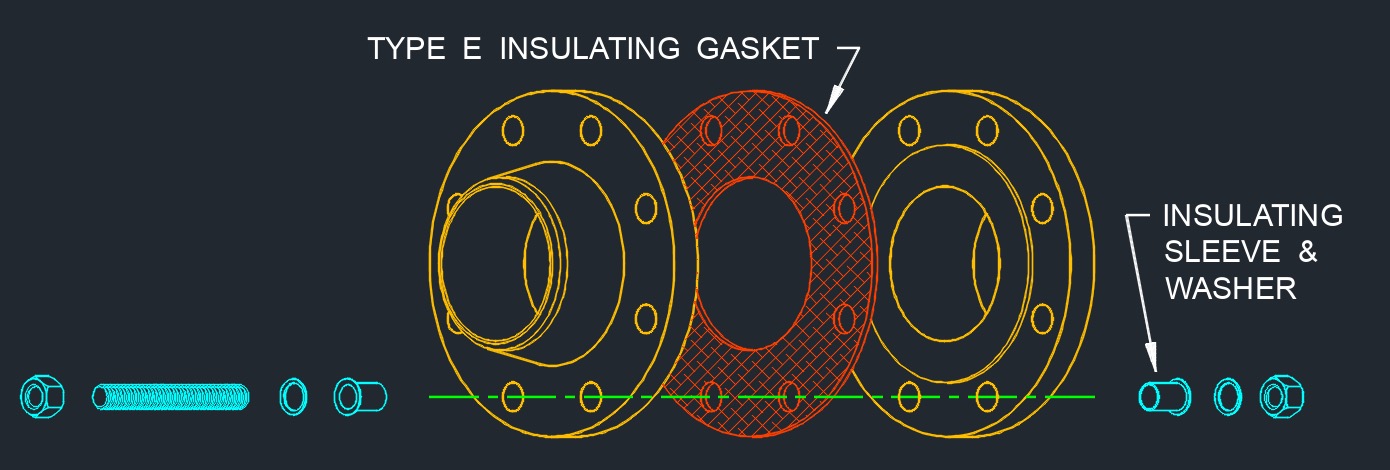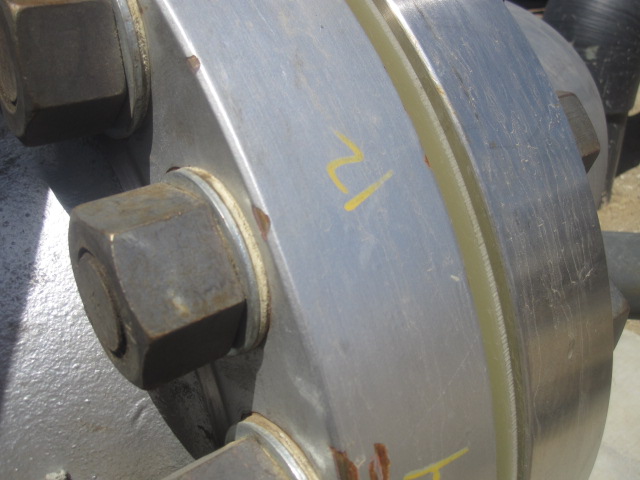Isolation Gasket

 Isolation Gasket Type D (RTJ)
Isolation Gasket Type D (RTJ)
This gasket is designed to specifically fit into the groove of ring type joint flanges and come in both oval and octagonal shapes.
 Isolation Gasket Type E (Full Face)
Isolation Gasket Type E (Full Face)
A full face insulating gasket centers the gasket within the flange by the bolts. This gasket covers the whole face of the flange making it less likely of a short across the flanges by any foreign material.
 Isolation Gasket Type F (Rased Face)
Isolation Gasket Type F (Rased Face)
A ring insulating gasket is centered within the bolts of the flange. This gasket only covers the face of the flange making easier the possibility of a short across the flanges by any foreign material.
Seal Type O
These gaskets have a sealing element on each side of the gasket and are available in Type E and F styles. Gasket and O-ring are available in different materials to maintain constant contact with the flange face.
How to Order
- Flange size and pressure rating
- Nominal pipe size
- Gasket face Type D, E, F, O
- Gasket Material
- Sealing element
- Single or double washer set
- Back washer material
- Sleve material
Gasket Installation Procedure
- Verify that the installation kit contain the material specified and the contents are not damaged.
- Clean the inspect pipe flange faces and apply lubrication oil to all threads.
- Install the gasket and align the flanges and gasket so that bolts will be centered.
- Use alignment pins in two diametrically oposition bolt holes whenever possible to assure alignment of flanges and gasket.
- Insert insulation sleves into the bolt holes taking care not to use force which could damage the sleve material.
- Insert the bolt with both insulating washers against the flanges followed by the steel washer and nut.
- Tighten two diametrically oposed bolts to start with remove the two alignment pins as needed. Following the bolt tightening procedure for the correct flange size.
- Bolts should be of sufficient length to extend through the nut approximately 1/4".




